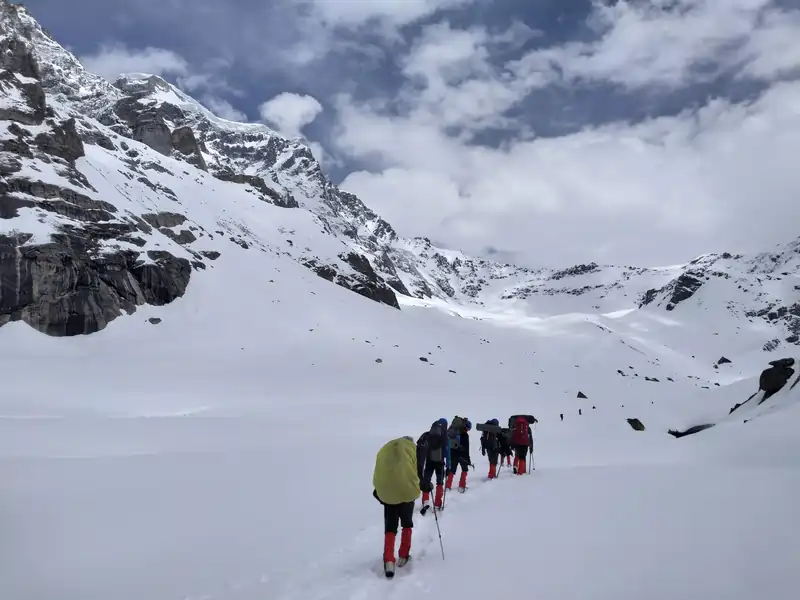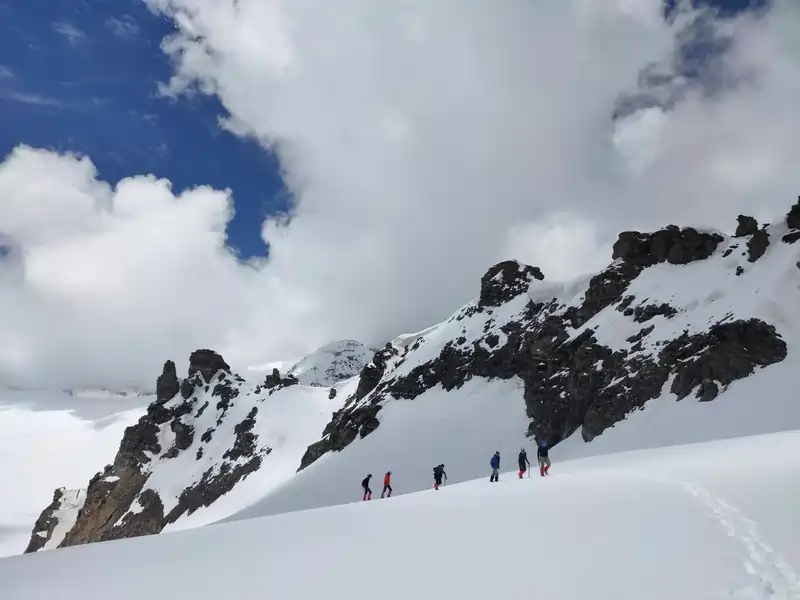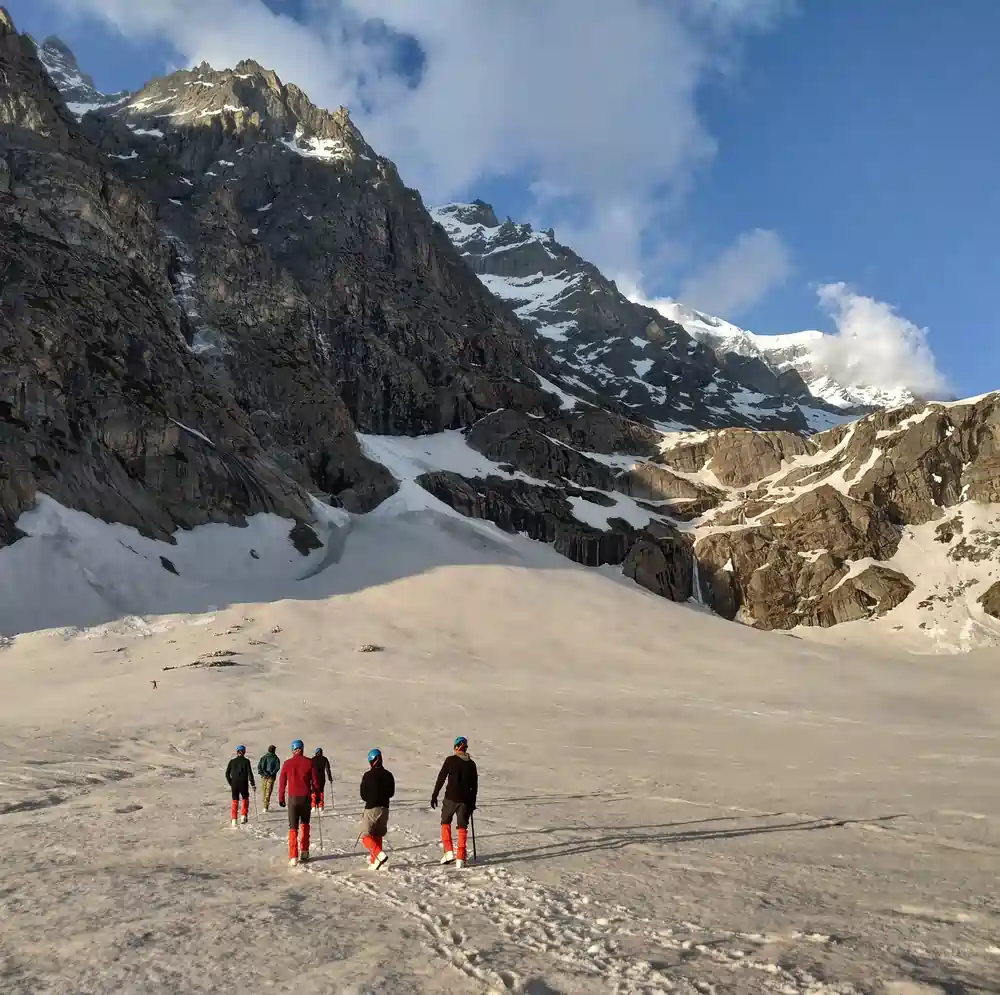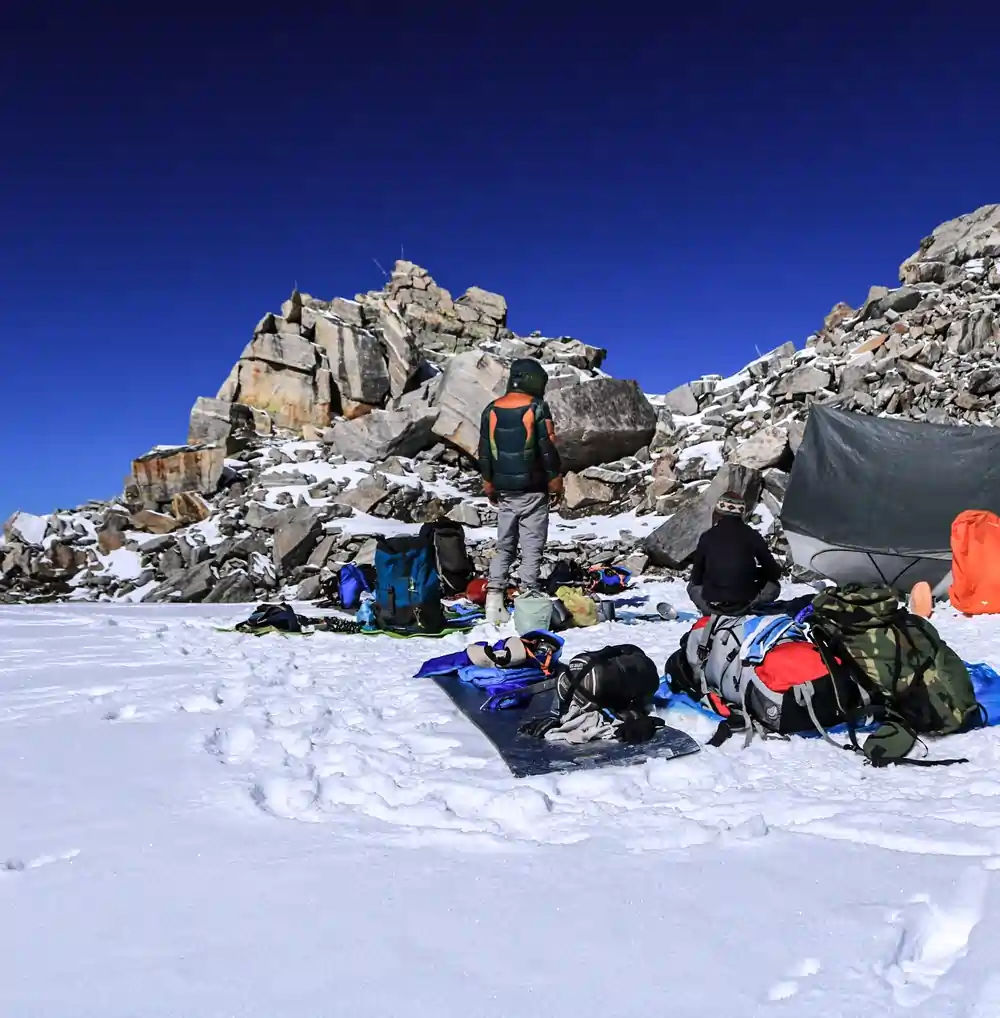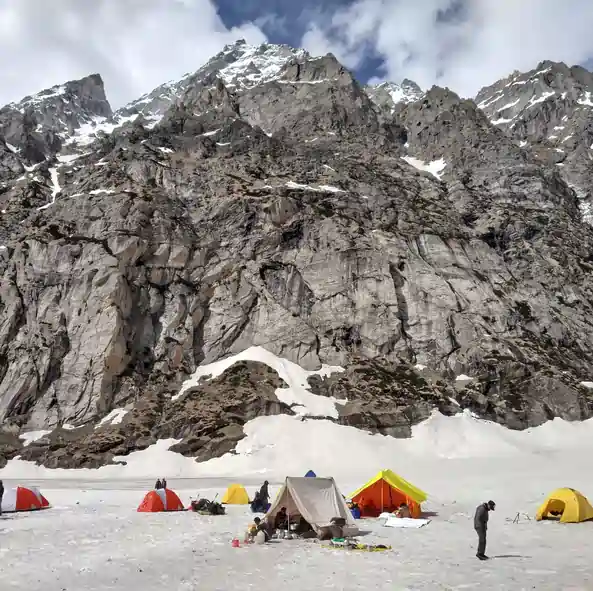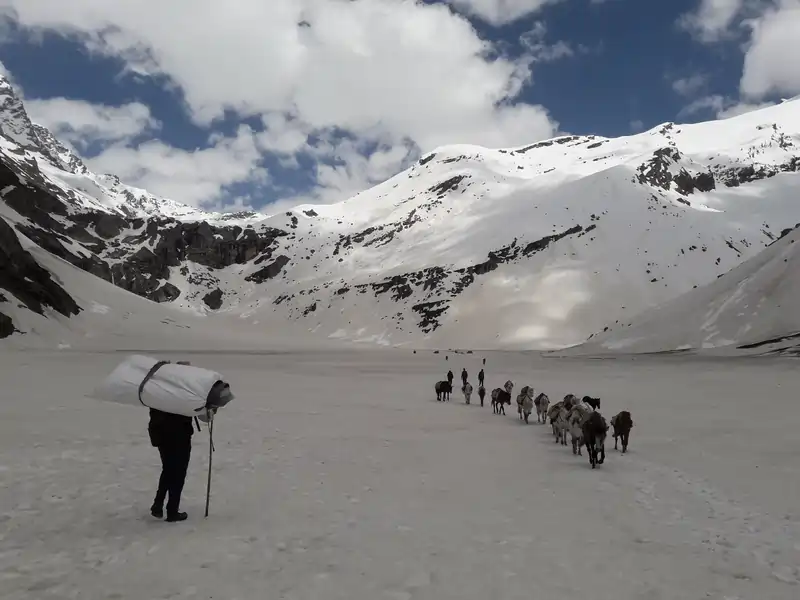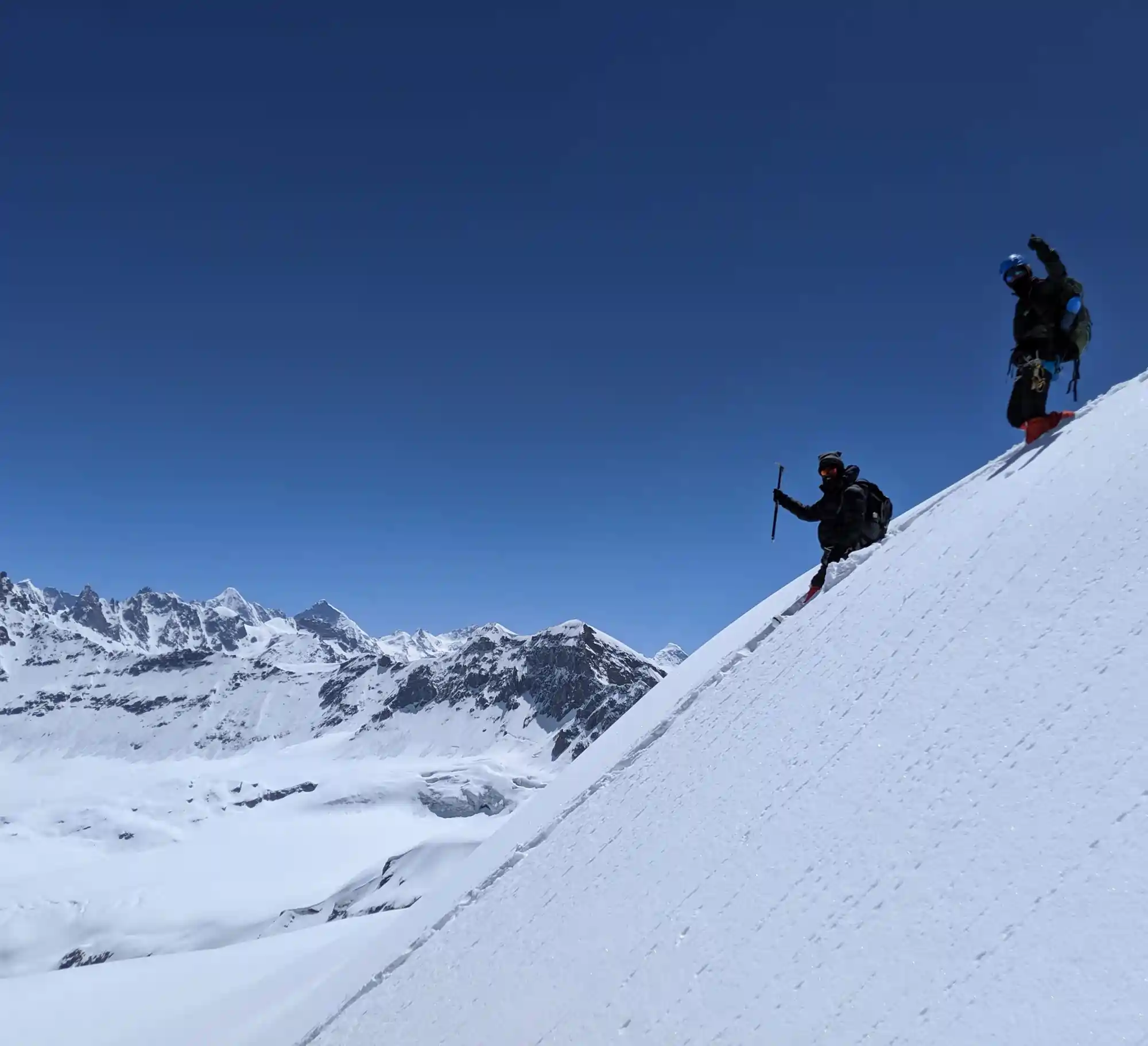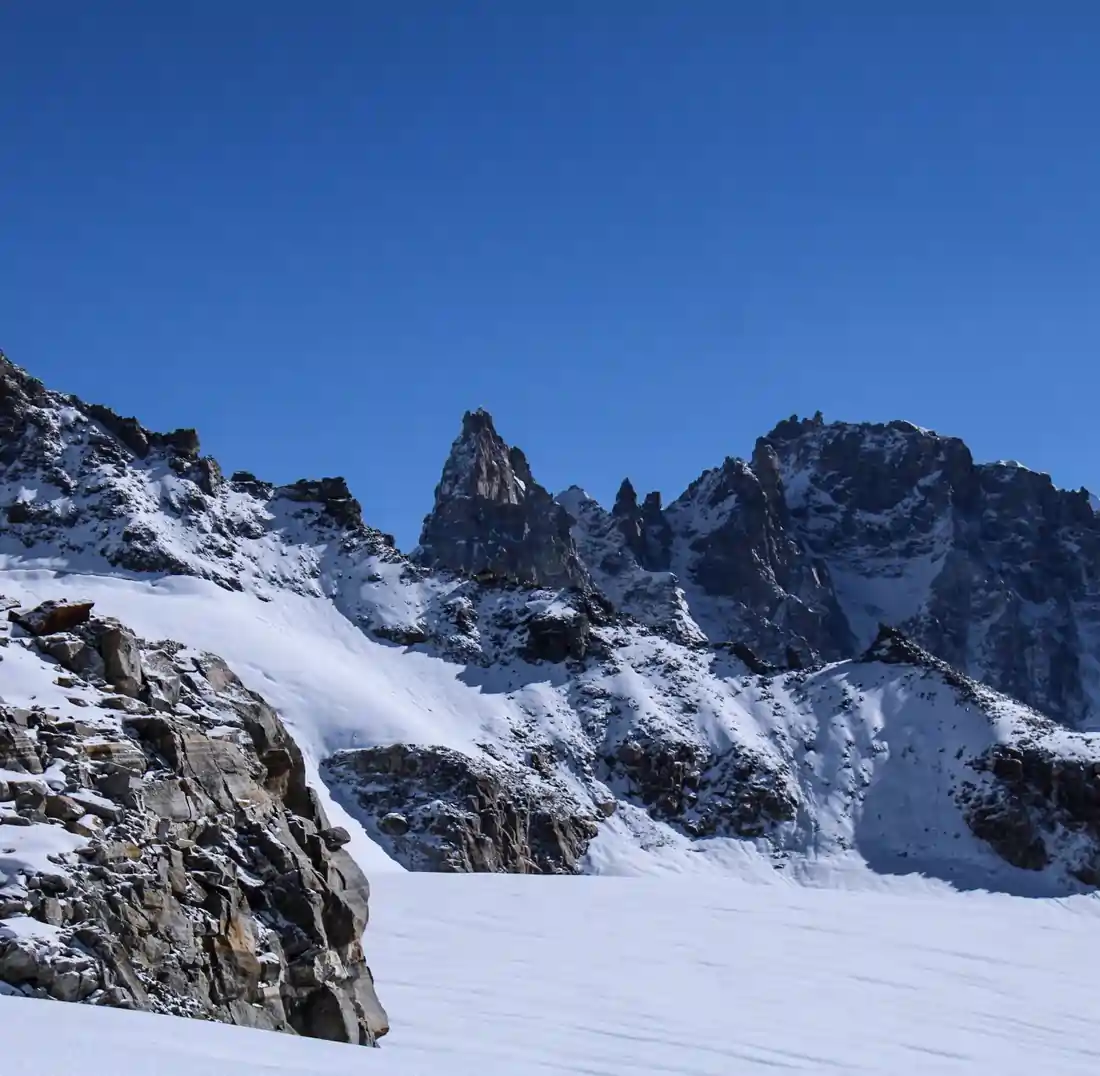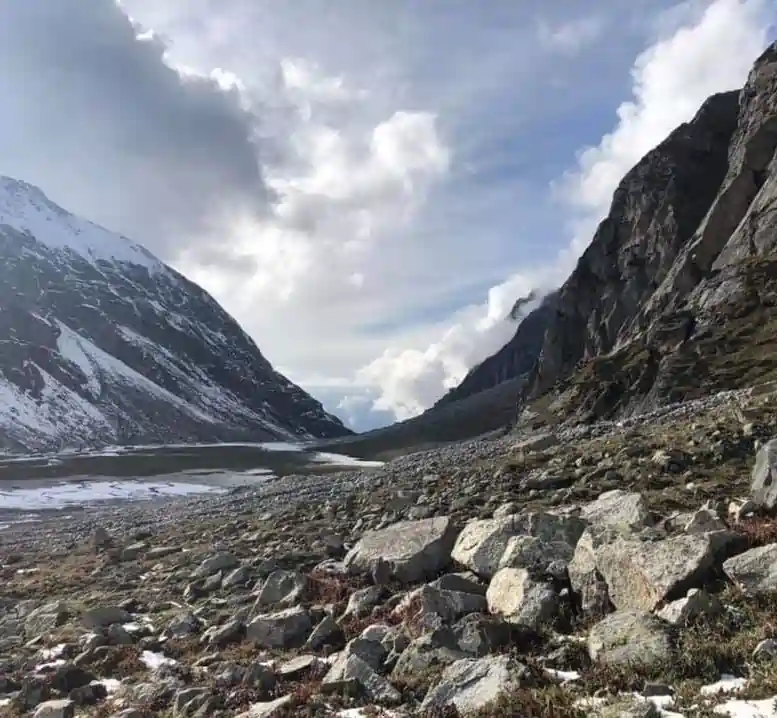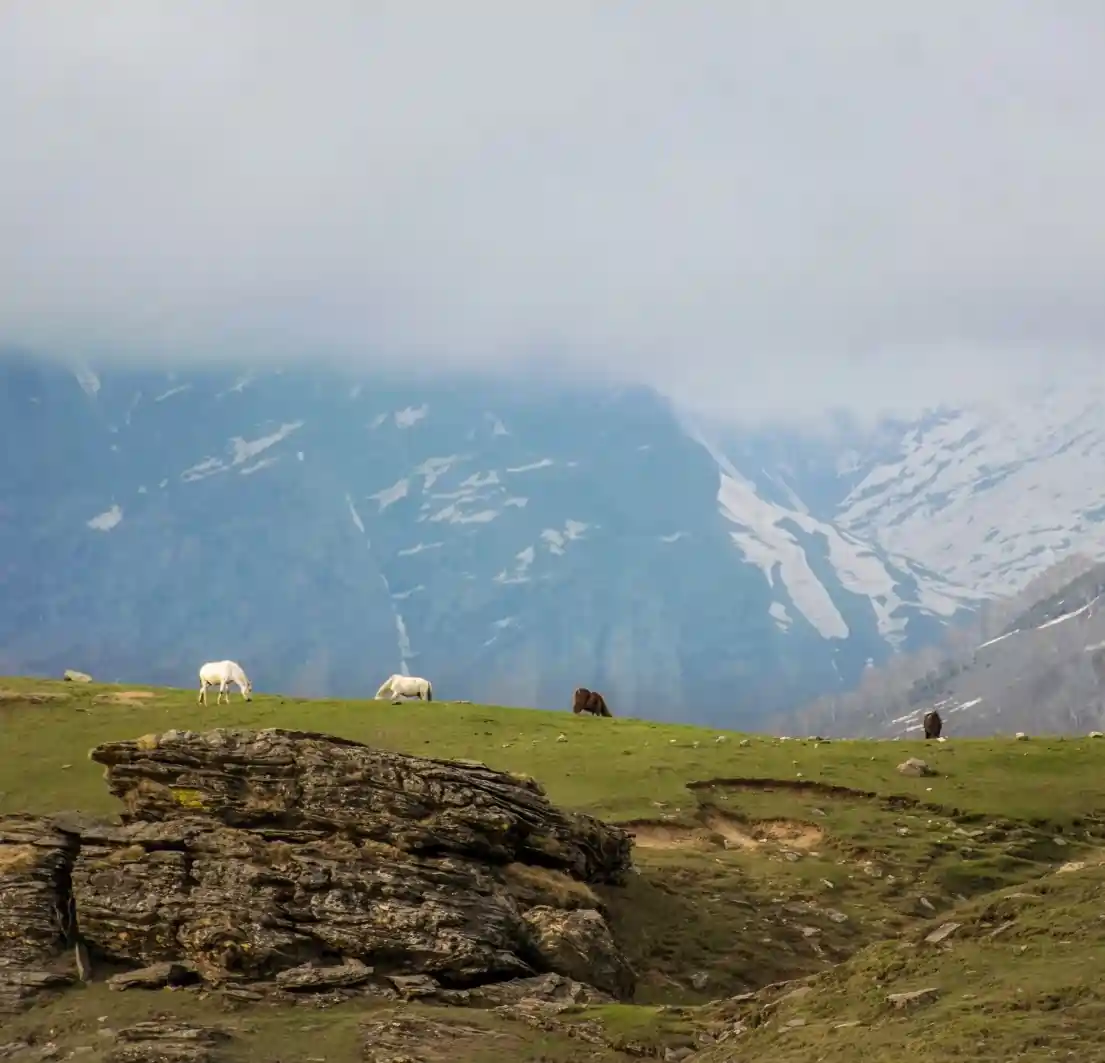12 Nights 13 Days
Up to 10 days
12 people
English, Hindi
Mt. Deo Tibba Expedition peak, is located in Himachal Pradesh’s Kullu valleys Pir Panjal Range is the second-highest peak and stands an astonishing 6,001 metres above sea level. The Deo Tibba is thought to be the meeting place for all gods (devtas), who are said to congregate and sit atop this hill to address topics of the utmost significance.
| Fix Departure Date – 2024 |
| September | 7th(6 Seats) | 14th (8 Seats) |
Note : Date Can Be Customize for 4 Or More People
It is located southeast of Manali above the village of Jagatsukh. Putting the legends aside, we like it because of its eccentricity. The sole adjective that describes its erratic personality is “temperamental.” Its intense moods, more than the fact that they are constantly changing, are what make it eccentric.
With two vertical ice gullies and an ice cap on the route to the top, the trek begins in Manali, a popular destination for backpackers, and it qualifies as a rigorous mountaineering excursion.
The track leads to the base camp of this spectacular peak through the most beautiful terrain, including expansive meadows with the most stunning display of colourful wild flowers, a panoramic view of the entire mountain range, and dramatic cloud formations that can be seen all along the way. We reach a scene of boulders, moraine, and slowly appearing snow that quickly covers the entire mountain’s surface as the vegetation begins to dwindle.
The steep descent to Duhangan Col is one of the climb’s more interesting (and difficult) sections. The col has a well-established reputation. It is as terrifying as it sounds if you’ve heard the stories about the col.
The peak of Mount Deo Tibba, which separates it from neighbouring mountains and is shaped like a dome, is another fascinating feature of the mountain. Unlike other summits, which are sharp, singular points, this summit is flat and more plateau-like.
The trek has some tough aspects that call for special expertise because they necessitate negotiating vertical ice gullies. Fixed ropes and specific climbing gear are needed to navigate these 60–70 degree grades. Mt. Deo Tibba expedition is intended for seasoned hikers with prior experience using mountaineering techniques including the usage of ice axes, crampons, descender, jumar, and roping up procedures. This is because of the mountain’s difficult terrain and expedition-style climb. This adventure is ideal for any ambitious mountaineer hoping to climb higher in the near future and wanting to reach a height of 6000 metres or more.
Region: Manali, Himachal Pradesh
Mt. Deo Tibba Expedition Start/End Point of the Trek: Manali
Mt. Deo Tibba Expedition Duration: 13D/12NHeight: 19700ftMt. Deo Tibba Expedition Distance: 60 km
Mt. Deo Tibba Expedition Difficulty Level: Difficult Trek
Mt. Deo Tibba Expedition Temperature: Day (10°C to 15°C) and Night (-2°C to 5°C)
Best time Mt. Deo Tibba Expedition: Mid June to October
As the trekkers move upward, Deo Tibba presents a difficult ascent and descent. Mid May to October are the finest months for trekking these pathways. The trek falls into the category of pre- and post-monsoon excursions because of the unfavourable weather conditions.
The trek is of difficult grade. We strongly advise a reasonable degree of physical fitness due to the top’s rather high height. Acclimatisation is necessary because of the difficult Deo Tibba Expedition’s requirement of covering more distances and higher elevations in a shorter amount of time. Before beginning the trek, we urge hikers to psychologically and physically prepare themselves.
Himtrek does provide easy accessibility to almost all types of equipment required for the trek on a rental basis with reasonable prices and extremely good quality. The equipment can be arranged on prior notice.
Depending on what time of year trekkers are going, different weather conditions exist. Pre- and post-monsoon months feature average daytime temperatures and noticeably colder nights. Weather conditions can become more difficult as elevation rises.
The trek is 60 km long and the highest point is at 19,700 ft altitude. The challenging nature of the trek exists due to such high altitude and the long distance accompanied by variable weather conditions.
The Mt. Deo Tibba Expedition is a challenging trek in the Indian state of Himachal Pradesh, located in the Pir Panjal range of the Himalayas. Mt. Deo Tibba itself stands at an impressive height of 6,001 meters (19,688 feet) above sea level, offering adventurers breathtaking views and a thrilling climbing experience.
The best time to trek Dev Tibba Mountain is during the summer months from May to June and the light rainy season from September to October, when the weather is good and the trails are available
Altitude sickness can affect hikers who climb to higher elevations. A healthy environment, a hydrated lifestyle and gradual climbing are important to reduce the chances of altitude related diseases.
Yes, there must be campsites at specific campsites along the hiking trails. Pedestrians can easily appreciate the comfortable tents, healthy food and simple offerings in the middle of the desert.
While Mount Dev Dunes is an intense hike suitable for professional hikers, beginners with fitness and objective credentials can experience the day with proper education and guidance.
Mount Dev Dunes has a variety of flora and fauna including Himalayan birds, wild flowers and occasional sightings of Himalayan wildlife including snow leopards and blue sheep.
The length of the Mount Deo Tibba trek varies depending on factors including trek tempo, weather conditions and acclimatization breaks It usually takes about 8-10 days to complete a roundabout experience trek
By Road:
The quickest and most economical way to get to Manali. Manali is accessible by road from several locations, including Delhi (540 km), Chandigarh (305 km), Dehradun (227 km), and Ambala (370 km).
By Train:
The closest railway station to Manali is Jogindernagar. Other train routes to Manali include those through Chandigarh and Ambala.
By Air:
The nearest airport is Bhuntar airport, 10 km from Manali. Cabs and local buses are easily available from Bhuntar to Manali.
12 Nights 13 Days Available on request
After completing the trek, why not extend your adventure and spend some time in Kasol with Himatrek stays?
Himtrek has cozy and comfortable places to stay in Kasol. After your trek, you can rest and relax at these places. Himtrek has small guest houses and nice homestays. There are different options for all kinds of travellers.
In Kasol, you can experience the interesting culture. You can explore the mall road . At the Himtrek stays, you can have peace in nature or enjoy cultural activities. Himtrek stays in Kasol give you comfort and adventure.
Himtrek offers a wide range of accommodation options in Kasol to suit the needs and tastes of every traveller. Whether you’re looking for a cozy guesthouse in the middle of a pine forest or a comfortable hostel with a lively atmosphere, Himtrek is the place for you.
So pack your bags, lace up your boots, and embark on an unforgettable journey into the heart of the Himalayas, and stay in
For more adventure and information click here :https://himtrekstays.com/
Kindly review the Terms and Conditions before proceeding with your booking.

